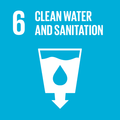wet-green has developed a natural leather tanning agent from a by-product of the olive cultivation industry – the leaves. Their process eliminates the use of hazardous chemicals and reduces water consumption, while benefiting worker health and local air quality.
wet-green uses extracts from olive leaves as a tanning agent to convert raw hides or skins into premium-quality leather. During olive harvests, leaves account for approximately 10% of the harvest weight. The leaves are considered a by-product, and are often burned by farmers. The wet-green tanning agent is recovered from the leaves using a method similar to brewing tea.
Conventional chrome-based tanning methods use a lot of water, generate hazardous waste, and cause worker health and air problems, yet still account for 90% of tanning production in the USA for example.1 Substituting hazardous tanning chemicals with wet-green’s olive tanning agent reduces the volume of harmful chemicals used in global leather production. According to wet-green, their tanning agent creates superb dyeing behavior, which leads to cost savings for dyestuffs.
Why you should care
Nearly 12 million tons of olives are harvested every year in Europe, which results in over a million tons of olive leaves as by-product, according to the company. The wet-green tanning solution can rid olive-growing regions of an unwanted by-product and help protect the environment and production workers from hazardous chemicals. Olive leaf tanned leather is suitable for many applications including furniture for residential and commercial sectors, car interiors, shoes, leather bags, watch straps and clothing.
How the Global Goals are addressed

Good Health and Well-Being
The olive leaf-based tanning process is free of harmful chemicals, and creates a healthy environment for workers who do not have to handle hazardous tanning agents, and a safe product for consumers.

Clean Water and Sanitation
The wet-green tanning system replaces applied chromium salts and aldehydes, thus reducing production of effluent, residues and other waste products.
Responsible Consumption and Production
wet-green uses discarded leaves from olive production as a renewable resource substituting for polluting tanning agents. Their tanning processes also creates superb dyeing behavior, which leads to cost and material savings for dyestuffs.


